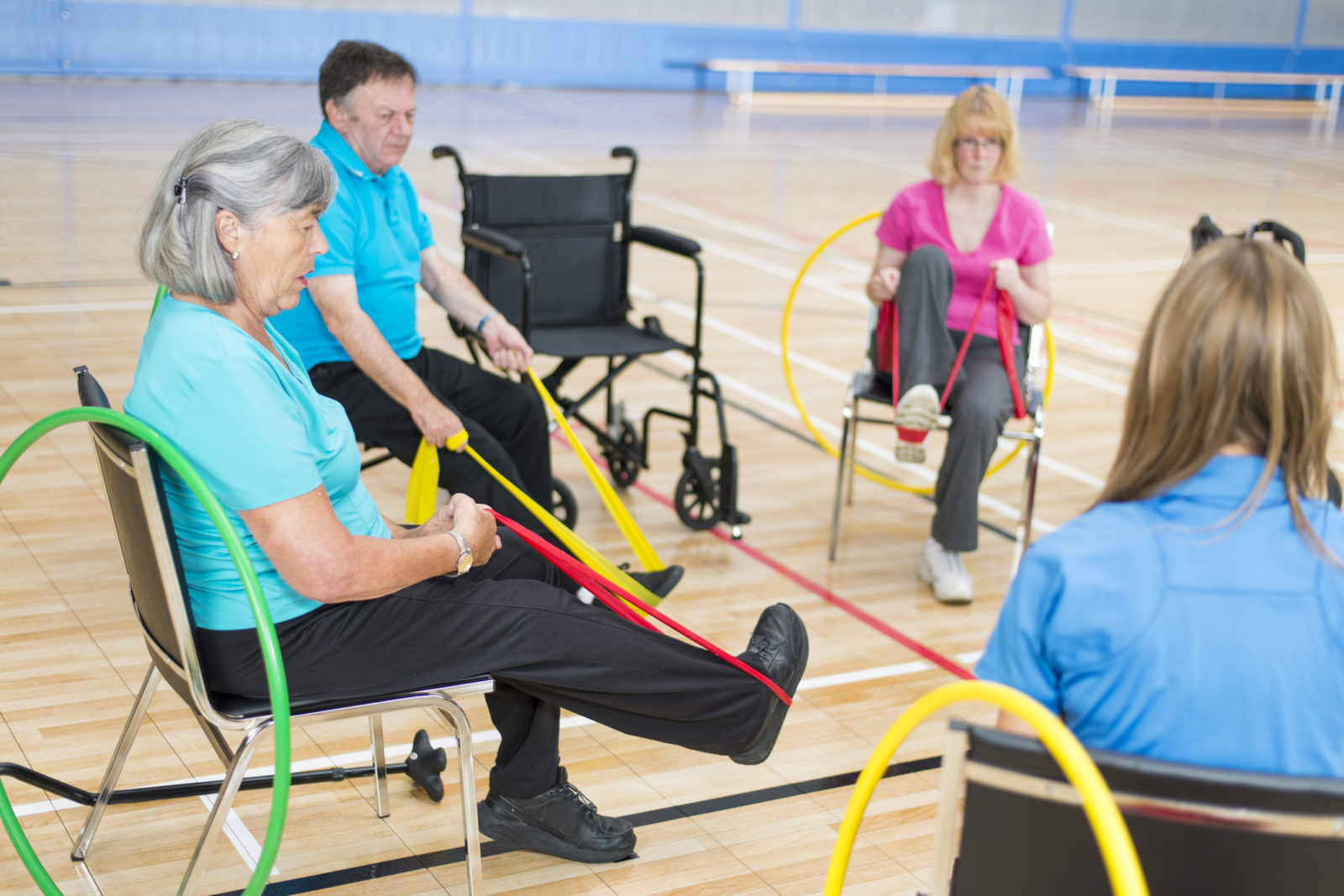Those Living with Limited Mobility Can Still Remain Physically Active

We’re all aware of the importance of exercise in maintaining a healthy mind and body. We’ve discussed its importance in helping prevent Alzheimer’s before. But what if you’re living with arthritis, osteoporosis, Parkinson’s disease or another condition that makes exercise difficult or even painful?
Physical activity is critical for everyone, including those living with health challenges. The older you get, the more important exercise becomes. Seniors need to exercise more than their younger counterparts because they are at greater risk for the health conditions that exercise can prevent, which include heart disease, diabetes, and stroke, among others. Numerous studies have shown that regular exercise protects the body against chronic diseases, improves mood and lowers your chance of injury.
The good news is that there are exercises that even those living with certain painful conditions can do with little to no discomfort or pain. In fact, exercise is one of the best ways to strengthen bones, increase flexibility and ease joint pain. Here are just some of the exercises that help people living with limited mobility.
Range of motion/flexibility exercises
These exercises can be done by nearly everyone and can help relieve stiffness and increase your ability to move your joints with less pain. For those with more mobility, this may include stretching exercises and yoga. For those with limited mobility, it may include simple seated exercises such as moving your neck from side to side and front to back, reaching your arms across your chest, raising your shoulders toward your ears, etc.
Tai chi
We’ve discussed the benefits of tai chi before. Tai chi is an excellent form of movement that almost everyone can participate in, including those in wheelchairs. According to a study in the New England Journal of Medicine, tai chi was particularly useful in improving balance in people living with Parkinson’s. The study randomly assigned nearly 200 men and women with mild to moderate Parkinson’s into three groups – one group did strength-building exercises, one did stretching and one did tai chi. After six months, the tai chi group were stronger and had better balance than participants in the strength and stretching groups. Most importantly, they had fewer falls.
Strength training
Lifting weights or using resistance bands helps build muscle and bone mass, improve balance and prevent falls. For those who have limited or no mobility in their legs, upper body training still provides benefits.
Aerobic exercises
Aerobic exercises include any activity that raises your heart rate. It includes walking, swimming, cycling, and tennis, just to name a few. According to a study published in Neurology magazine, brisk walking is one of the most effective exercises to help ease the symptoms of Parkinson’s. The research indicated that those who walked quickly enough to raise the heart rate improved both their movement symptoms, such as rigidity, as well as fatigue, depression and cognitive difficulties. Many people with mobility issues find exercising in water especially beneficial as it is often less painful and the water supports the body, often making it easier to move.
Daily activities
Not all exercise has to be a formal routine. Gardening, walking the dog and even cleaning the house can all be forms of exercise.
Before starting any exercise routine, be sure and talk to your doctor. He or she will be able to “prescribe” a routine that will work for your particular condition or situation.
![PATHWAYS Care Solutions, LLC [logo]](https://www.pathwayscaresolutions.com/wp-content/uploads/sites/207/2016/10/logo-new-oct4.jpg)
![PATHWAYS Care Solutions, LLC [logo]](https://www.pathwayscaresolutions.com/wp-content/uploads/sites/207/2016/08/new-logo.png)